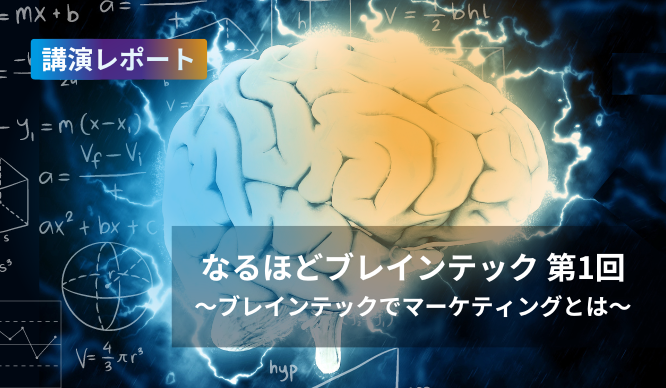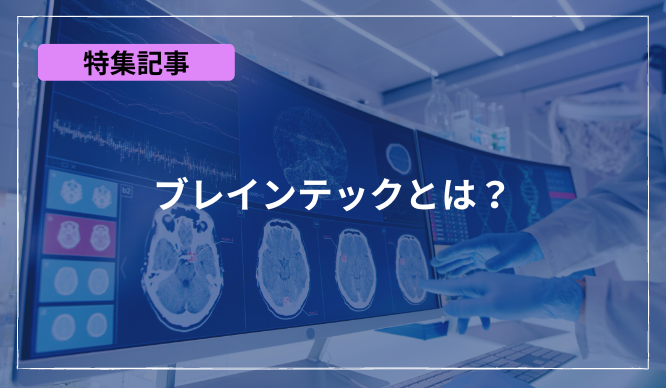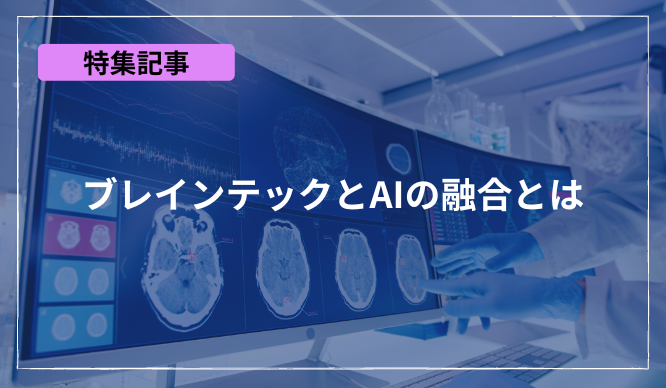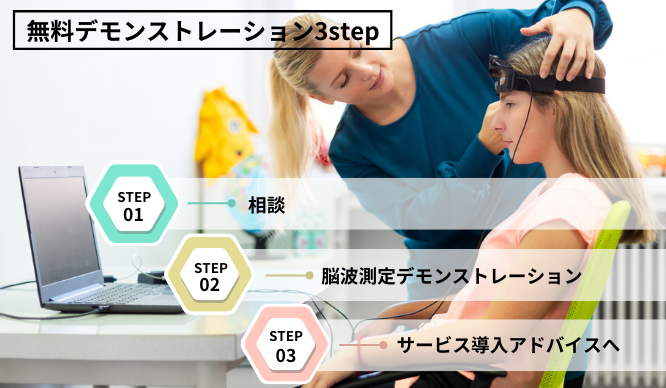Application for evaluation machine
I see Braintech 2nd ~ Listening to Mr. ARAYA Kanai for the latest information on Braintech and the Moonshot Project ~ Lecture report
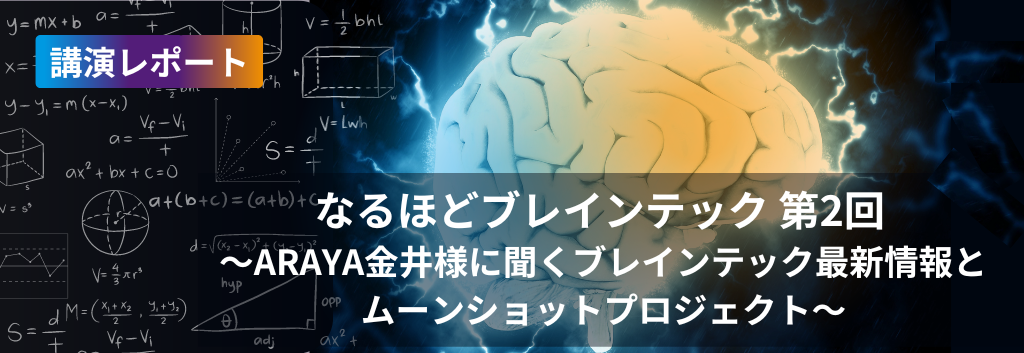
On May 31, 2023 (Wednesday), we held a webinar on Idea Braintech ``The 2nd Braintech Latest Information and Moonshot Project with Mr. ARAYA Kanai''.
This time, we welcome Mr. Kanai, CEO of Araya Co., Ltd., and Mr. Sasai, CRO, who are active in the cutting-edge fields of Braintech and AI, and discuss "Latest Trends in Braintech" and "Moonshot Project" both in Japan and overseas. , and talked about "use cases".
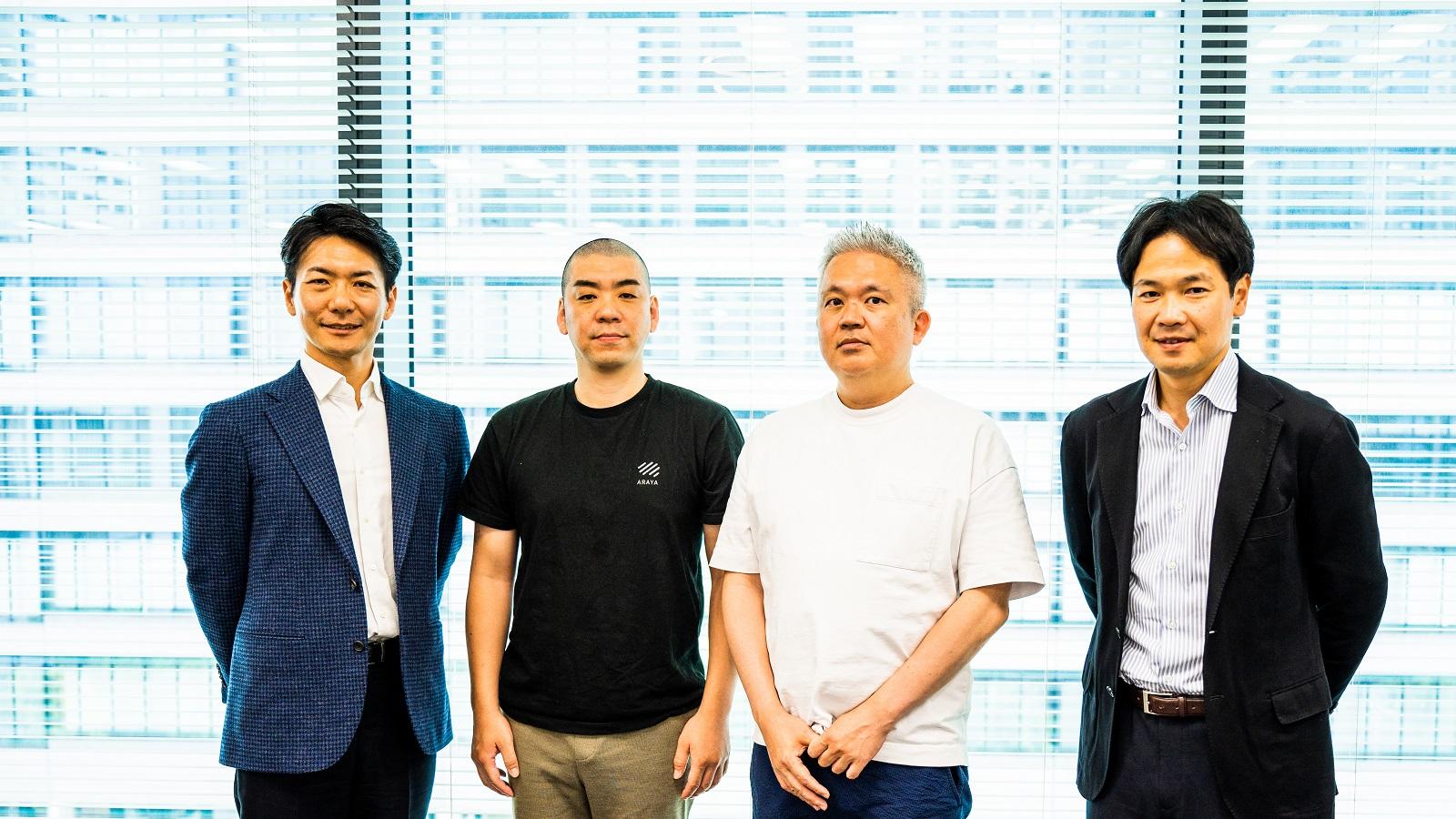
From left: [Facilitator] Macnica, Ltd. [Guest] Mr. Sasai, Mr. Kanai of Araya Co., Ltd. [Panelist] Macnica
This article summarizes the contents of the webinar held on the day in a report. Please take a look at the video below.
Introduction of Araya Co., Ltd.
Araya Co., Ltd. is an AI development company that started with brain research and brain image analysis after its establishment in 2013.
The two people who took the stage this time were originally neuroscientists doing research on consciousness, and are currently working to spread the use of “Braintech” throughout the world through Araya.
At the beginning of the company's establishment, Mr. Kanai was doing research at a university in the UK, and since returning to Japan in 2015, he has grown the Company with the twin wheels of "AI and Braintech."
Of the approximately 140 employees, about 60% are full-time employees and the remaining 40% are interns, and are attracting a lot of attention from young people who aspire to be active in the AI and braintech industry, and they gather to gain experience. It is a promising company that feels very new.
Araya's theme is to make the future of mankind overwhelmingly interesting with AI x Neurotech.
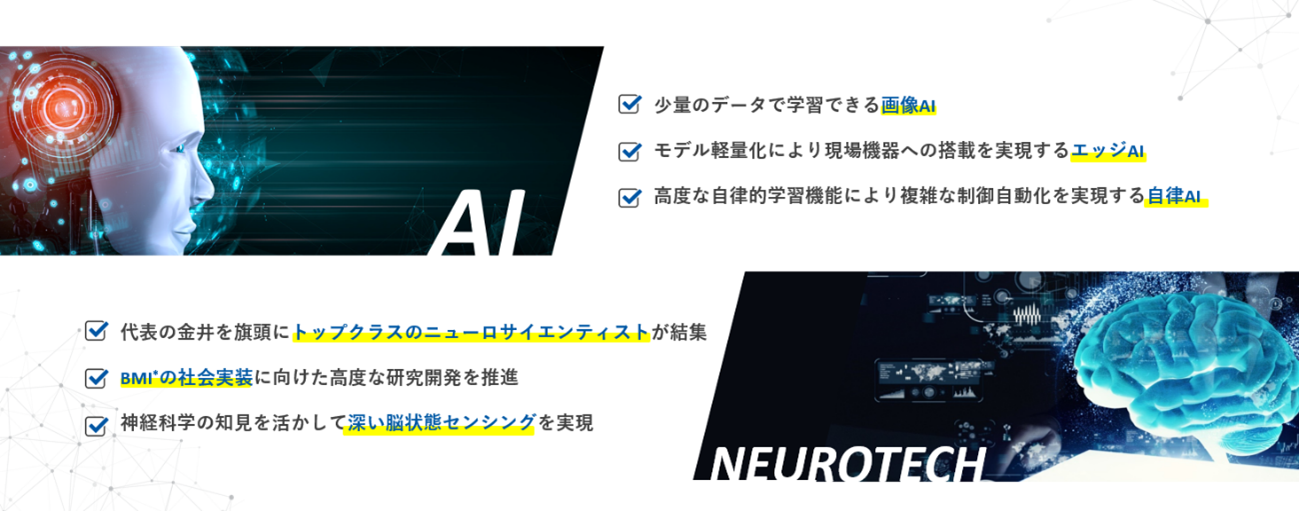
Efforts to utilize AI
Since the field of AI is extremely practical, in addition to "image recognition", "edge AI", which implements the inference function of deep learning in the device, and "autonomous AI", which is a technology of deep reinforcement learning, are used. We can also provide services.
We are also actively working on the utilization of technologies that allow objects and robots to move autonomously, such as the automation of construction machinery in the construction industry.
In addition, as an example of using AI for visual inspection, which is difficult to see visually, he introduced a groundbreaking AI solution that can detect white hair on top of white rice.
Efforts to utilize neurotech
In the field of neurotech, led by Mr. Kanai, we continue to conduct research as an organization that gathers people with doctoral degrees in neuroscience and people who are interested in this field.
In-house development of BMI (Brain-Machine Interface)*1, which is one of the exits of Neurotech, and the "Moonshot Project" described later, we are working on development in collaboration with various researchers all over Japan. .
*1: Technologies and devices that read brain waves, etc. and operate a computer according to those commands, or, conversely, send direct stimuli from the computer to the nerves, giving people sight, taste, etc., without going through the sensory organs. .
In this way, Araya, which has accumulated experience in commercializing new technologies in the AI industry and implementing them in society, will use these experiences to further promote social implementation in the braintech industry. is.
Overseas latest information
Next, Mr. Kanai introduced Braintech research and case studies overseas.
Home Monitoring System for Epilepsy Patients - Seer Medical (US/Australia)
The first example was Seer Medical, which is developing a system for home electroencephalogram diagnosis and monitoring of epilepsy patients.
This system was developed from the desire to monitor the symptoms of epilepsy patients at home instead of hospitalization.
Since the electrodes are embedded under the scalp, it is possible to obtain stable and continuous brain waves compared to the method in which the electrodes are directly inserted into the skull.
In the case of epilepsy, it is not necessary to observe the activity of each individual cell, so it can be said that the system has a good balance between practicality and degree of invasiveness.
The points to consider when introducing BrainTech are, "Can it be done easily?" and "Is there a need?" This is an interesting case because the ability to contribute to medical care as science will become a company's strength.
Stent-type electrode insertion technology from cerebral blood vessels - Synchron (US/Australia)
Next, we were introduced to the case of Synchron, which is known as the first company in the world to apply BMI using a stent*2 electrode (stentload) to humans.
With this technology, brain activity can be obtained by inserting a stent-type electrode, which is used in aneurysm surgery, through a blood vessel near the surface of the brain.
Inserting metal into a blood vessel feels like a high threshold, but according to medical professionals, compared to the method of drilling a hole in the skull and inserting electrodes, this surgery is routinely performed and relatively It seems that it is easy to use with less burden on patients.
In addition, a patient who has been using this technology for about a year can actually operate a computer and use it for typing by imagining movements and characters in his head. It also has a proven track record of practicality.
*2: A medical device that expands the tubular part of the human body from the inside of the lumen. In many cases, it is a mesh tube made of metal and used according to the area to be treated.
Keyboard operation by monkey brain information decoding - Neuralink (US)
Lastly, he introduced the case of Neuralink, which is famous for being founded by Elon Musk.
In this example experiment, a monkey with a chip implanted in its brain captures neural activity in the brain as it traces a screen with a finger.
From this neural activity information, it has been proven that it is possible to read what kind of letters the monkey was trying to write and enter it on the screen.
Neuralink's approval for human clinical trials has become a big news recently, so it is believed that invasive BMI competition and technological development will continue to advance.
Kusunoki: So far, you've introduced examples of groundbreaking solutions from three companies. Is there any reason why such startups are emerging from Australia?
Mr. Kanai: In Australia, we are conducting large-scale research on "epilepsy" in terms of human resources and scale. In addition, because we use a technique called "minimally invasive" that is somewhere between invasive and non-invasive, we have a system that allows for good cooperation between the medical community and the engineering community. It is thought that it is not.
Kusunoki: Minimally invasive technology does not necessarily require large-scale surgery.
Mr. Kanai: At first, it started with medical purposes, but I think that it may eventually become a technology that everyone wants to use, not just as a method for overcoming physical obstacles in humans. I'm here.
Kusunoki: It is almost impossible for humans to analyze a huge amount of data such as neural activity. I have high hopes that it will become popular in the world.
From here, I would like to turn our attention to domestic cases and introduce the "Moonshot Project" in which Mr. Kanai is involved.
moonshot project
The Moonshot Research and Development Program is a large-scale program that promotes challenging research and development led by the Cabinet Office. Aiming to achieve this by 2050, nine goals have been set.
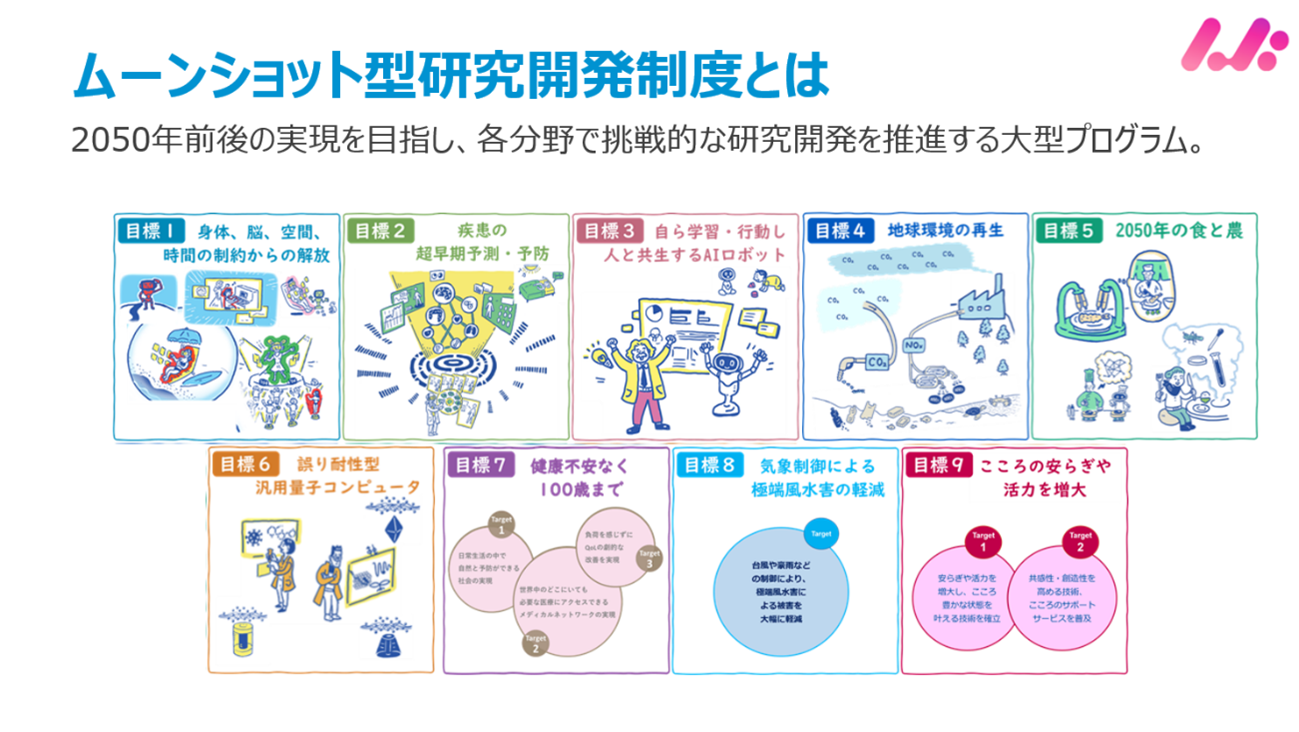
What Araya is currently working on is part of Goal 1: “Freedom from the constraints of body, brain, space, and time.”
In order to achieve this goal, the Company are improving BMI technology with AI, and are tackling issues that assume both physical space and cyberspace, such that avatars and robots can be controlled by human thinking.
Interface team project
As part of the Moonshot Project initiative, an event called BMI Brainpick was held in 2022.
This event is a competition in which avatars in virtual space are operated using non-invasive headphone-type electroencephalographs, and the speed and degree of freedom of movement are competed.
Many junior and senior high school students participated in the competition, and after the competition, it seems that some of them said, "I want to get a job where I can do this kind of development in the future." It was a very popular event.
In addition to research and development of technology, the Company have created and published the "Brain Tech Guidebook" to provide accurate information from the standpoint of experts when the general public implements Brain Tech in society. We are also working to provide information that will serve as a reference for the general public to use Braintech's technology with peace of mind in the future.
middleware team project
Next, Mr. Sasai introduced the middleware team's efforts in the moonshot project.
Our team is conducting research with the aim of implementing communication methods such as telepathy.
In this initiative, instead of using an invasive measurement method, non-invasive electroencephalogram measurement is performed using an "ultra-high-density electroencephalograph," which lowers the hurdles for actual social implementation and makes it difficult to speak. It is believed to be a source of hope for patients.
The Ultra High Density EEG is not as easy to attach as a regular EEG, but it contains 16 electrodes in each of the 8 adapters, for a total of 128 channels of high-density electrode placement. Therefore, it is possible to obtain more accurate data than a normal electroencephalograph.
In this project, we first aim to decipher communication in a non-invasive manner, and we are working on research on whether it is possible to return e-mails using the waveforms acquired by this electroencephalograph.
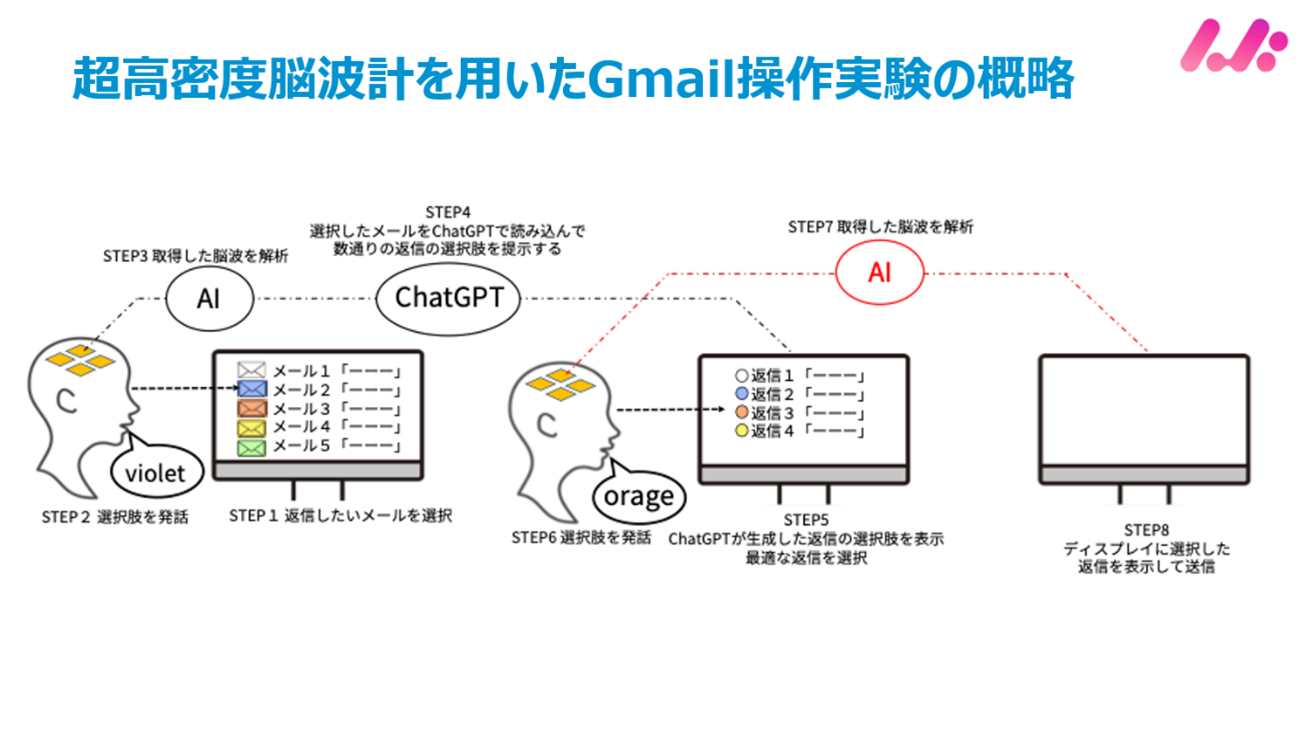
As a specific method, by reading and analyzing the waveform of the electroencephalogram when one of the names of several colors linked to the contents of each email is pronounced in a voice so soft that it can hardly be heard, You can select emails using
By linking the selected email to ChatGPT, which is a generation AI, several types of replies based on past history are presented as options, so this time, one of several colors associated with those reply emails pronounce the name.
Since the reply/send button and the button for returning to the screen are also assigned different colors, by repeating the screen selection by pronunciation, we succeeded in replying to the email using the waveform of the electroencephalogram.
In this experiment, in which Mr. Sasai himself was the subject, he succeeded in replying to emails with an accuracy of 70% to 80%. When the results of this experiment were posted on SNS, it was played 500,000 times, showing great excitement. That's right.
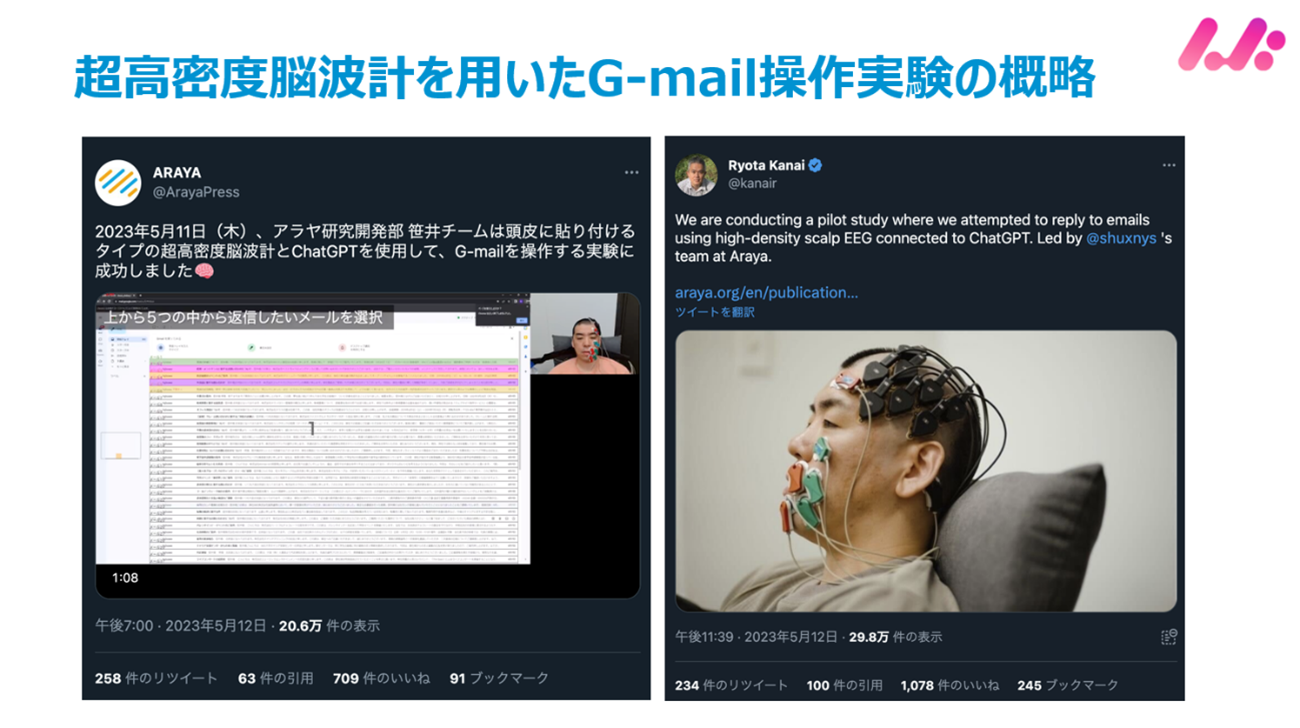
In the future, we aim not only to analyze brain waves of several types of pronunciation, but also to analyze them on a scale similar to that of actual human vocabularies. We are conducting research for its application.
Kusunoki: It is said that the affinity between Braintech and AI is already high, but it is thought that the fusion with generative AI will further increase its credibility.
Mr. Kanai: Even if the amount of information that can be obtained from the brain is limited, we can think of ways to use generative AI to successfully reinforce it. I'm here.
Up to this point, we have introduced case studies in Japan and overseas that look a little further into the future.
Latest Case of Araya
Araya has gone through the second phase of AI commercialization since its founding, aiming to become a brain information industry, and is now in the third phase, the “brain x AI phase”.
Mr. Kanai's aspirations since the Company company's establishment have not changed, and his desire to realize cyberization and AI with intentions has not changed. continue to challenge
Research and development in safe driving of automobiles
For more than five years, Araya has been conducting research on the use of brain science for safe driving in collaboration with Honda Motor Co., Ltd.
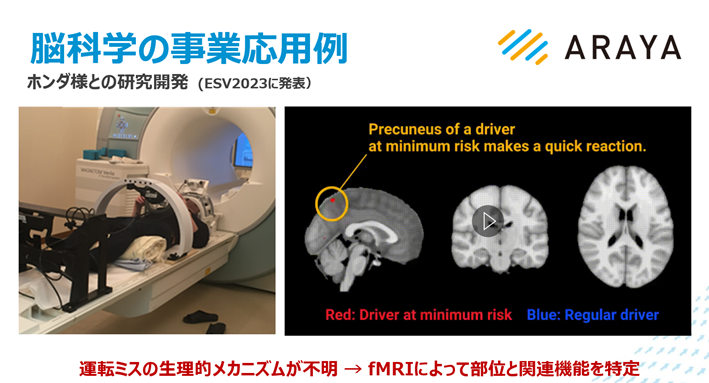
In order to study which part of the brain is important for safe driving, we conducted experiments using fMRI and a driving simulator to find out how attention works in the brains of both good drivers and ordinary people. I've been doing a project to analyze from activities.
The knowledge gained from this project is also used in actual product development, making it an example of applying brain science to business in the automotive industry.
Kusunoki: Driving errors have become a social problem, so if brain science can contribute to solving the problem even a little, Braintech's social value will likely be higher than it is now.
Mr. Kanai: I believe that this will be an important piece of knowledge when considering the progress of autonomous driving and the safe driving of elderly people in the declining birthrate and aging population.
Development of human state estimation AI using brain waves as correct data (Face2Brain)
Finally, he introduced his efforts to develop AI that enables sensing with non-contact information instead of electroencephalographs.
In this initiative, we are developing AI technology that reconstructs brain activity from facial information, and it seems that we have succeeded in collecting a large amount of data even from non-contact information.
If this data becomes an asset and the accuracy of sensing from facial information increases, we can expect various applications of brain science.
Murata: In promoting the social implementation of Braintech, it is a high hurdle to wear an electroencephalograph while driving. I think that the future will be expected to be used in such a way that it fuses with information.
Aiming to solve social issues through the fusion of science and economics
Araya aims to fuse science and economics by being positioned between academia and society.
Mr. Kanai: The division between academic research results and the use of new technologies in society is a major issue, but by reducing the distance between them, new technologies will be utilized in society, and research will be conducted for further research. We believe that a virtuous circle will be created in which we can support people.
Through the business of Braintech, the Company will continue to promote further activities with the vision of wanting to energize people in academia both in Japan and overseas and make them feel the value of research in society more. .
Summary
At the Naru Braintech event held this time, we were able to hear stories about the latest information on Braintech, including examples from Japan and overseas.
Regarding the social implementation of Braintech, I feel that striking a balance between rapid implementation and information accuracy is both extremely important and a difficult task.
In order to overcome this challenge, specialized knowledge and experience in the brain science and AI business will be required, so Macnica would like to support our customers in this area.
Thank you for reading this article! I would appreciate it if you could deepen your understanding of brain tech even a little.
free demonstration
Guidance of the demonstration
Would you like to actually measure brain waves?
What is the "skill transfer of experts" based on brain waves? What is AI that learns human consciousness and judgment?
I think there are a lot of unknown things, so why not try measuring your brain waves first and experience what it's like?
After the actual measurement, we will provide support from proposals to implementation and operation so that we can use AI using EEG at the customer's site while including examples of AI utilization in our activities so far. increase.
Learnmore
Document download
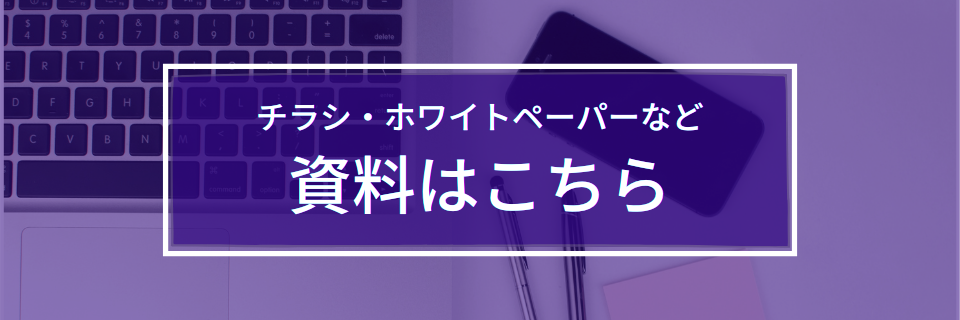
If you want to know the details, please download the materials from here.
Learn more
Inquiry
If you have any questions regarding this article, please contact us below.
